Post by Dave on Feb 20, 2010 13:09:44 GMT
I came across a clip on youtube that really saddened me and it tells its own story about the UK as it is now and the real fact that such things as pride, standards etc have long been lost and decay and neglect are the order of the day, I do not need to walk very far from my home to see with my own eyes the evidence all around me.
We are well and truly being screwed for sure, we pay far more in taxes and council rates and yet all we hear about is cutbacks and how there is no money to pay for anything and you wonder where all the money goes as there once was a time when everything was kept to high standards and everyone had pride and everything was so well looked after.
I know it pains some of the younger members on here to hear the older ones go on about the good old days and while I’m happy to admit there are many things better these days than in the past, there are so many things that have been lost getting here and they were more important than say a now owning a 50” TV, because they were what made this country the proud place it was once.
There was a time when people scrubbed the steps and path outside their houses and they were the days people lived within their means, if they did not have the money they simply went without and when I look around me and see all the neglected everywhere I have to ask why it is so when I hear in the news every single day the huge debt this country in now in and I find myself asking yet again just where is all the money going.
In the January of 1970 I caught a train from Newton Abbot station heading H.m.S Ganges at Shotly Gate near Ipswich to join the navy, just a few months after my 15th birthday and those who know about my terrible childhood will understand why at that time I felt had no choice but to choose this route in my life, only I was soon to find out I had joined for all the wrong reasons.
That said it did me no harm and while life at Ganges was very hard as you will see from the first video clip on this post(below), it taught me such things as pride, discipline and so many other valuable things that have helped me to be the person I wanted to be.
Please make sure you watch the manning of the mast
The name HMS Ganges came into service in 1779 when 3 vessels were presented to the navy by the Honourable East India company. One of them was the Bengal built on the Thames at Blackwall which was re-named HMS Ganges. She was broken up in 1816.
Her successor built in Bombay was launched on 10th November 1821, subsequently arriving at Portsmouth in October 1822.
After various commissions HMS Ganges was commissioned as the flag-ship of Rear Admiral R L Bayes on the Pacific Station and left for the Pacific in September 1857. On return to England in 1861 HMS Ganges entered the history book as being the last sailing ship to be a sea going flag-ship
In 1866 HMS Ganges became the boys' training ship anchored in Falmouth harbour where she remained until August 1899. In November 1899 HMS Ganges was transferred to Harwich harbour.
HMS Ganges remained in Harwich harbour as a boys' training ship and in 1905 the boys moved ashore for their training, which continued at Shotley until 1976.
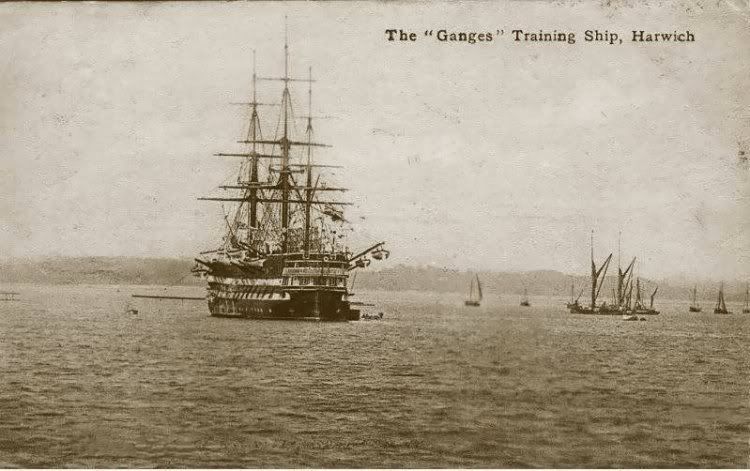
When HMS Ganges was broken up at Devonport in 1930 several items from the ship found new uses. It is believed that the Captain's cabin from the stern of the Ganges is now part of the Burgh Island Hotel at Bigbury-on-Sea, South Devon, England.

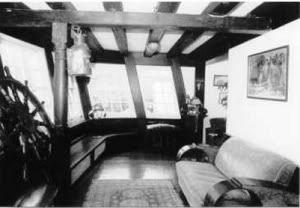
After Ganges was closed a lot of it was knocked down and only the main buildings near the main gate are still standing but are suffering at the hands of neglect I'm afraid and there is a battle taking place to use the site for housing.
As it once was

How it looks now
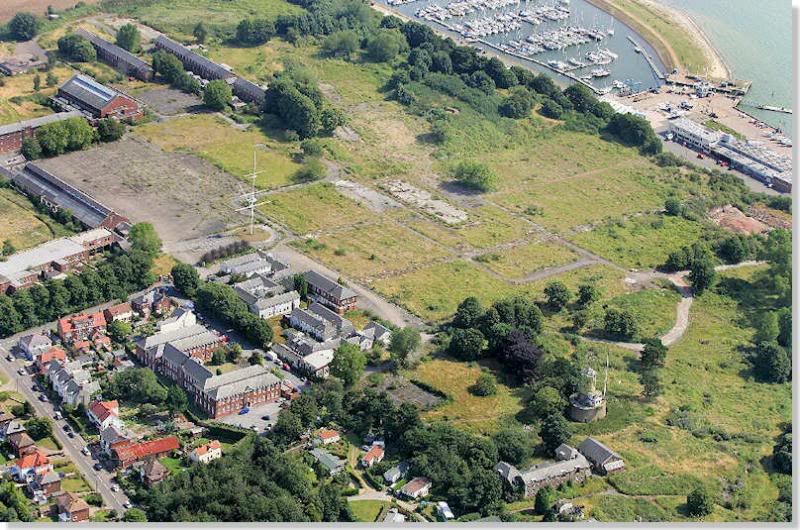
The very sad thing is to see what has happened to the main mast that was on the main parade ground. You had no choice and had to climb up it and as someone who hated heights I can tell you it scared me to death.
The button boy who stood on the very top was very brave indeed, the last part had to be shinned up and how he managed to then hold on and get in a position to stand on the button I will never know and once standing on it all he had was a small lighting conductor that was knee high to grab hold of with his knees as tightly as he could.
The mast was erected in 1907 for boy entrant training purposes using the lower foremast (steel) from HMS Cordelia (1881) with other sections from the mizzen mast of HMS Agincourt (1865). The overall height is 143 feet 10 inches, with the button being 11¾ inches diameter and 3 inches thick.
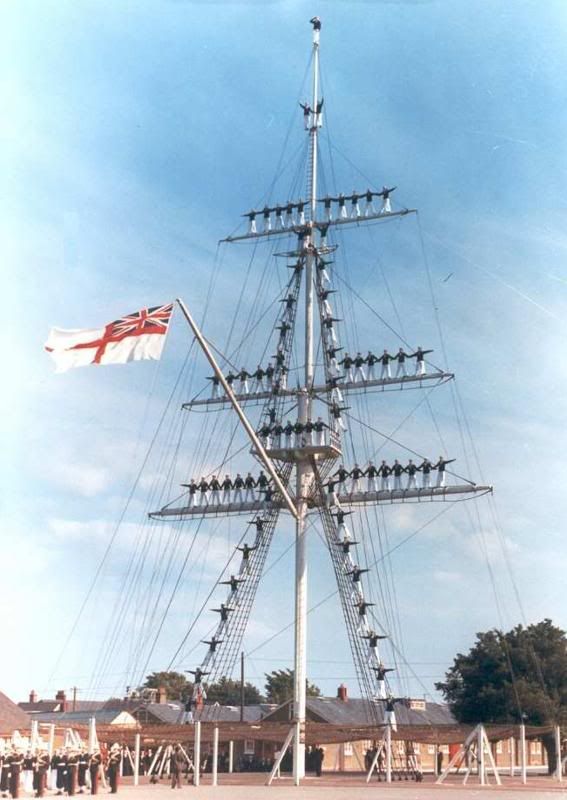
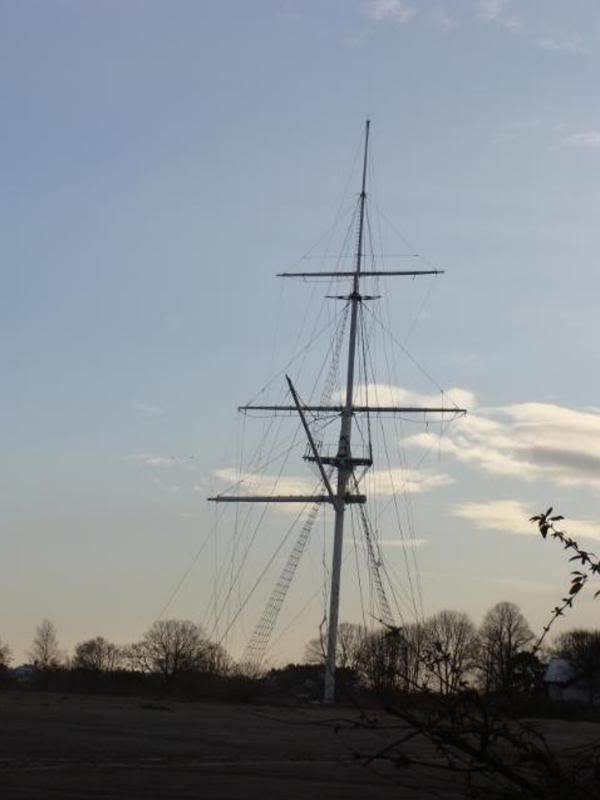
The Battle Of Long Covered Way
There was a famous battle that took place at H.m.S Ganges in the summer of 1970 and it was not one against any emery, but between the 1400 trainees who were all aged between 15 and 16 years old. When you first went to Ganges your were put into a division and there was seven in total and I was put in the Frobisher Division. In total there were 200 other boys in my division and we lived 50 to a mess and all the messes came of what was known as Long Covered Way. Each division had five buildings in total and the fifth one was used for recreation so it has a TV, record player, snooker table and tennis tables etc in it.
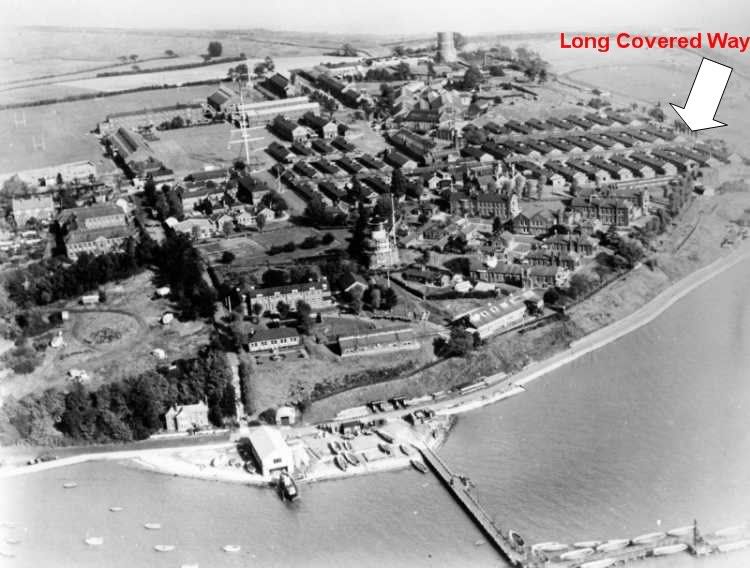
A picture showing Long Covered Way in 1920
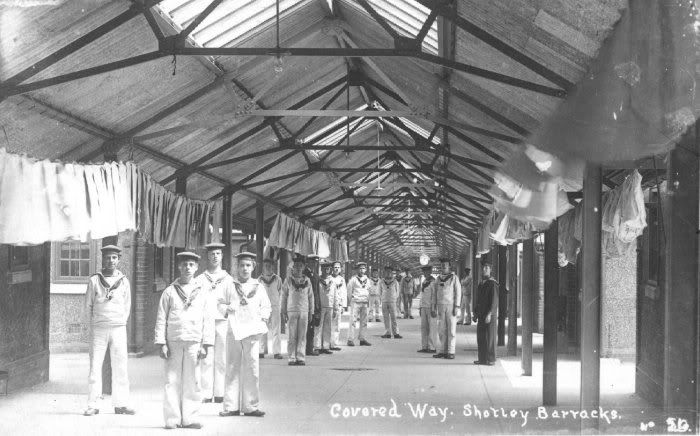
Every Friday night everyone had to work hard to get the mess in top condition as on the Saturday morning the officer of the day inspected the whole camp, but every three months the Captain himself did it and he would make an award to the division he thought was the very best. When he did his inspection it was a requirement he saw no ships crew and 1400 of us had to get lost and would have faced a charge if the Captain had seen us.
The rivalry between the divisions to win the captains award was unbelievable and most were fed up with the Hanson Division always winning the award. On the Friday night before the Captains round it was normal for groups of lads from one division digging up flowers from another divisions gardens in the middle of the night and replanting them in their garden. Only unless they had put someone to guard them for the rest of the night they would have been dug up again by some from another division.
Ready for inspection
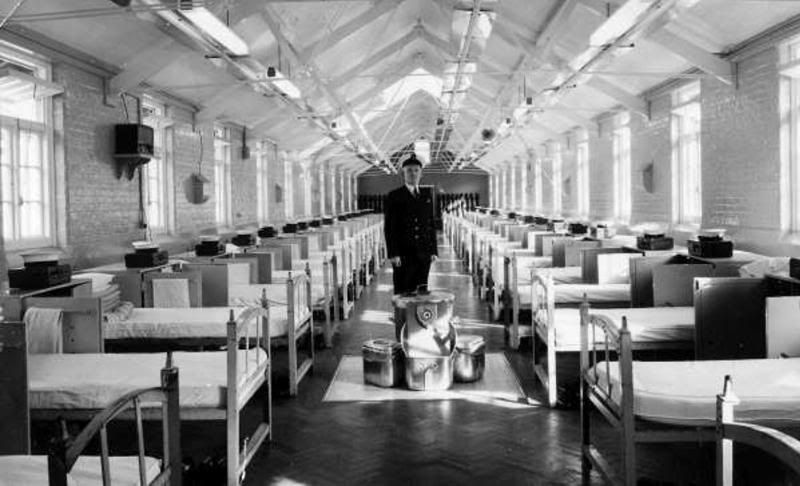
It was not just flowers that were nicked from other divisions, in some they had highly polished large brass shell cases there were a prised procession, I remember so well six lads from my mess luring a lad out from one of the Hanson’s messes and starting giving him a beating so the others in the mess would come outside to his aid. Once they were outside me being the small one was lifted up and went in through a window and passed the shells out the window and then they were taken back to our mess.
The Friday night before the Captains rounds that caused the Battle Of Long Covered Way to happen, was just to mental to describe but as a result the battle was arranged to take place at 2am ( early hours of the Monday)at Long Covered Way between all the seven divisions. Everyone turned up armed with such things as broom handles, dustbin lids, pillow cases filled with boots and it was a bloody affair and many suffered some unpleasant wounds. It was going strong for a good twenty minutes when a shout went out that the boneheads were coming (Navy police etc)
Within in 30 seconds 1400 boys were in bed pretending they were asleep only their boots were still on their feet and could be seen sticking up under the bed clothes. All 1400 were ordered out of bed and made to strip naked and put on an oilskin and were then sent to the main parade ground. Five hours of jogging and press ups followed and by the end of it all everyone’s skin was red raw and sore where the oilskins had rubbed and no one was allowed to go back to bed but had to carry on doing their duties for the day.
I was a part of this famous battle and I lived to tell the tale.
We are well and truly being screwed for sure, we pay far more in taxes and council rates and yet all we hear about is cutbacks and how there is no money to pay for anything and you wonder where all the money goes as there once was a time when everything was kept to high standards and everyone had pride and everything was so well looked after.
I know it pains some of the younger members on here to hear the older ones go on about the good old days and while I’m happy to admit there are many things better these days than in the past, there are so many things that have been lost getting here and they were more important than say a now owning a 50” TV, because they were what made this country the proud place it was once.
There was a time when people scrubbed the steps and path outside their houses and they were the days people lived within their means, if they did not have the money they simply went without and when I look around me and see all the neglected everywhere I have to ask why it is so when I hear in the news every single day the huge debt this country in now in and I find myself asking yet again just where is all the money going.
In the January of 1970 I caught a train from Newton Abbot station heading H.m.S Ganges at Shotly Gate near Ipswich to join the navy, just a few months after my 15th birthday and those who know about my terrible childhood will understand why at that time I felt had no choice but to choose this route in my life, only I was soon to find out I had joined for all the wrong reasons.
That said it did me no harm and while life at Ganges was very hard as you will see from the first video clip on this post(below), it taught me such things as pride, discipline and so many other valuable things that have helped me to be the person I wanted to be.
Please make sure you watch the manning of the mast
The name HMS Ganges came into service in 1779 when 3 vessels were presented to the navy by the Honourable East India company. One of them was the Bengal built on the Thames at Blackwall which was re-named HMS Ganges. She was broken up in 1816.
Her successor built in Bombay was launched on 10th November 1821, subsequently arriving at Portsmouth in October 1822.
After various commissions HMS Ganges was commissioned as the flag-ship of Rear Admiral R L Bayes on the Pacific Station and left for the Pacific in September 1857. On return to England in 1861 HMS Ganges entered the history book as being the last sailing ship to be a sea going flag-ship
In 1866 HMS Ganges became the boys' training ship anchored in Falmouth harbour where she remained until August 1899. In November 1899 HMS Ganges was transferred to Harwich harbour.
HMS Ganges remained in Harwich harbour as a boys' training ship and in 1905 the boys moved ashore for their training, which continued at Shotley until 1976.

When HMS Ganges was broken up at Devonport in 1930 several items from the ship found new uses. It is believed that the Captain's cabin from the stern of the Ganges is now part of the Burgh Island Hotel at Bigbury-on-Sea, South Devon, England.


After Ganges was closed a lot of it was knocked down and only the main buildings near the main gate are still standing but are suffering at the hands of neglect I'm afraid and there is a battle taking place to use the site for housing.
As it once was

How it looks now

The very sad thing is to see what has happened to the main mast that was on the main parade ground. You had no choice and had to climb up it and as someone who hated heights I can tell you it scared me to death.
The button boy who stood on the very top was very brave indeed, the last part had to be shinned up and how he managed to then hold on and get in a position to stand on the button I will never know and once standing on it all he had was a small lighting conductor that was knee high to grab hold of with his knees as tightly as he could.
The mast was erected in 1907 for boy entrant training purposes using the lower foremast (steel) from HMS Cordelia (1881) with other sections from the mizzen mast of HMS Agincourt (1865). The overall height is 143 feet 10 inches, with the button being 11¾ inches diameter and 3 inches thick.


The Battle Of Long Covered Way
There was a famous battle that took place at H.m.S Ganges in the summer of 1970 and it was not one against any emery, but between the 1400 trainees who were all aged between 15 and 16 years old. When you first went to Ganges your were put into a division and there was seven in total and I was put in the Frobisher Division. In total there were 200 other boys in my division and we lived 50 to a mess and all the messes came of what was known as Long Covered Way. Each division had five buildings in total and the fifth one was used for recreation so it has a TV, record player, snooker table and tennis tables etc in it.

A picture showing Long Covered Way in 1920

Every Friday night everyone had to work hard to get the mess in top condition as on the Saturday morning the officer of the day inspected the whole camp, but every three months the Captain himself did it and he would make an award to the division he thought was the very best. When he did his inspection it was a requirement he saw no ships crew and 1400 of us had to get lost and would have faced a charge if the Captain had seen us.
The rivalry between the divisions to win the captains award was unbelievable and most were fed up with the Hanson Division always winning the award. On the Friday night before the Captains round it was normal for groups of lads from one division digging up flowers from another divisions gardens in the middle of the night and replanting them in their garden. Only unless they had put someone to guard them for the rest of the night they would have been dug up again by some from another division.
Ready for inspection

It was not just flowers that were nicked from other divisions, in some they had highly polished large brass shell cases there were a prised procession, I remember so well six lads from my mess luring a lad out from one of the Hanson’s messes and starting giving him a beating so the others in the mess would come outside to his aid. Once they were outside me being the small one was lifted up and went in through a window and passed the shells out the window and then they were taken back to our mess.
The Friday night before the Captains rounds that caused the Battle Of Long Covered Way to happen, was just to mental to describe but as a result the battle was arranged to take place at 2am ( early hours of the Monday)at Long Covered Way between all the seven divisions. Everyone turned up armed with such things as broom handles, dustbin lids, pillow cases filled with boots and it was a bloody affair and many suffered some unpleasant wounds. It was going strong for a good twenty minutes when a shout went out that the boneheads were coming (Navy police etc)
Within in 30 seconds 1400 boys were in bed pretending they were asleep only their boots were still on their feet and could be seen sticking up under the bed clothes. All 1400 were ordered out of bed and made to strip naked and put on an oilskin and were then sent to the main parade ground. Five hours of jogging and press ups followed and by the end of it all everyone’s skin was red raw and sore where the oilskins had rubbed and no one was allowed to go back to bed but had to carry on doing their duties for the day.
I was a part of this famous battle and I lived to tell the tale.

 Bloody 'ell Dave what a punishment......................a whole division of moaning old gits who reckon all the officers are idiots and the other armed forces rubbish!
Bloody 'ell Dave what a punishment......................a whole division of moaning old gits who reckon all the officers are idiots and the other armed forces rubbish! 

 .......safety net or not......no chance would you get me up there.
.......safety net or not......no chance would you get me up there.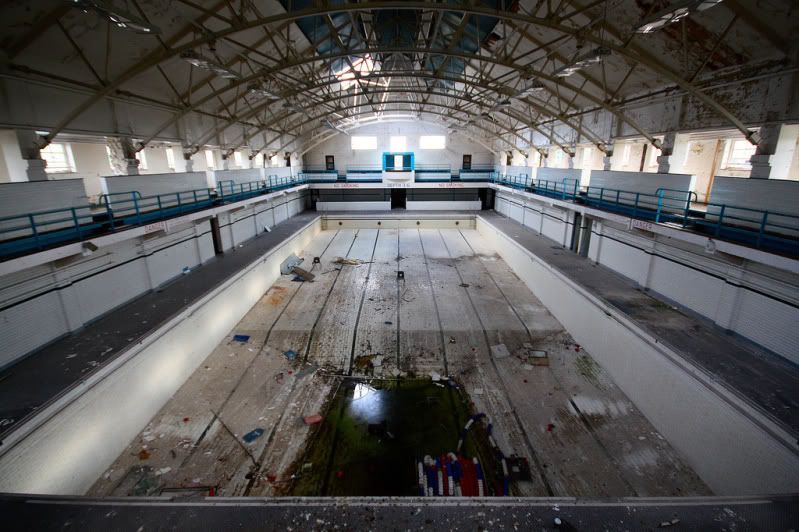

 - Psssst, which ways Union Street Jack?......
- Psssst, which ways Union Street Jack?......